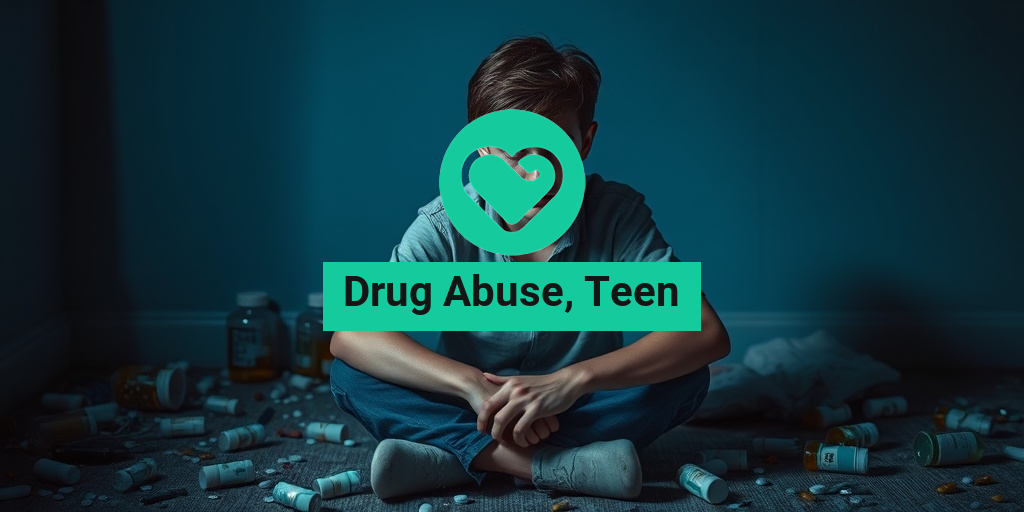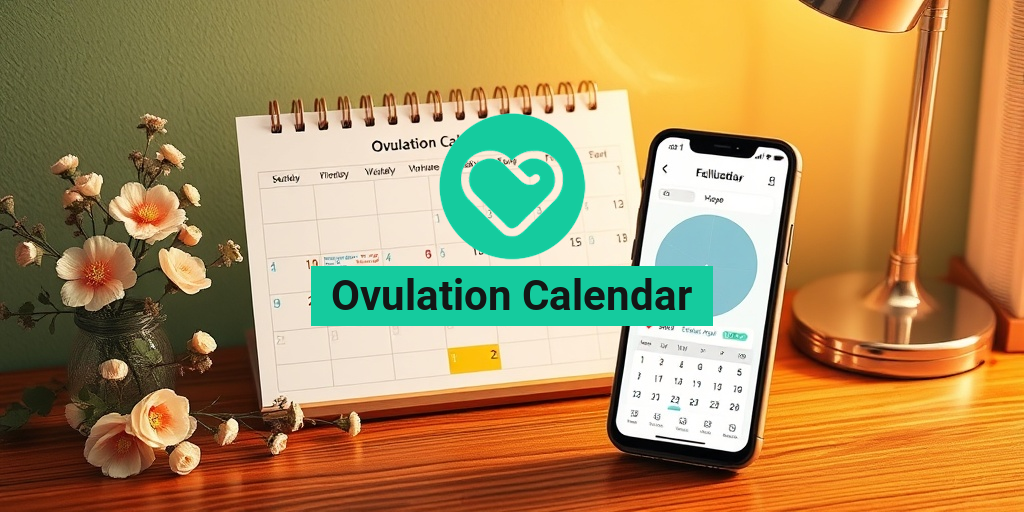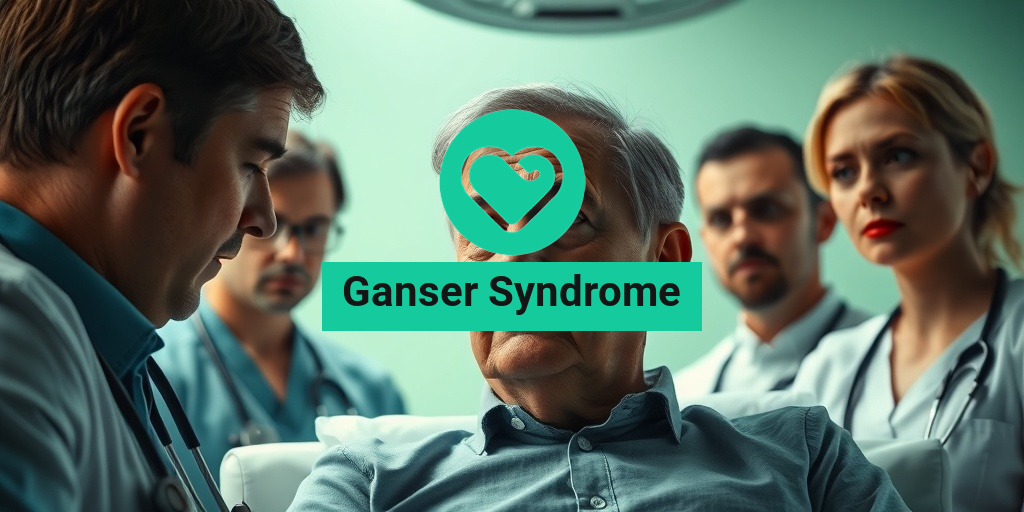What Is Teen Drug Abuse?
Teen drug abuse refers to the illegal or inappropriate use of drugs by adolescents, typically between the ages of 12 and 18. This issue has become increasingly prevalent in recent years, with many teens experimenting with substances such as alcohol, marijuana, prescription medications, and other illicit drugs. Understanding what constitutes drug abuse is crucial for parents, educators, and communities to effectively address this growing concern.
The Scope of the Problem
According to various studies, a significant percentage of teens have reported trying drugs at least once. This experimentation can lead to addiction, health issues, and a host of social problems. The reasons behind teen drug abuse are complex and often include:
- Peer Pressure: Many teens feel compelled to fit in with their peers, leading them to try drugs.
- Curiosity: The desire to explore new experiences can drive teens to experiment with substances.
- Emotional Issues: Teens dealing with stress, anxiety, or depression may turn to drugs as a coping mechanism.
- Family Environment: A family history of substance abuse can increase the likelihood of a teen engaging in similar behaviors.
Types of Substances Commonly Abused
Teens may abuse a variety of substances, including:
- Alcohol: Often the most accessible substance, alcohol is frequently misused by teens.
- Marijuana: With changing laws and perceptions, marijuana use among teens has risen.
- Prescription Medications: Drugs like opioids and stimulants are sometimes misused for their euphoric effects.
- Stimulants and Hallucinogens: Substances like cocaine, ecstasy, and LSD are also popular among some teens.
Understanding the types of drugs commonly abused can help parents and guardians identify potential risks and take proactive measures to prevent substance abuse.
Signs of Drug Abuse in Teens
Recognizing the signs of drug abuse in teens is essential for early intervention. Many parents may overlook subtle changes in behavior, but being vigilant can make a significant difference. Here are some common signs to watch for:
Behavioral Changes
Teens struggling with drug abuse may exhibit noticeable changes in their behavior, including:
- Withdrawal: A sudden disinterest in social activities or a decline in friendships can be a red flag.
- Declining Academic Performance: A drop in grades or a lack of motivation to attend school may indicate substance use.
- Secretive Behavior: If your teen becomes increasingly secretive about their activities or whereabouts, it may be a cause for concern.
Physical Signs
In addition to behavioral changes, there are also physical signs that may indicate drug abuse:
- Changes in Appearance: Neglecting personal hygiene or a sudden change in style can be a sign.
- Bloodshot Eyes: This can be a common indicator of marijuana use or other substances.
- Unusual Smells: The presence of strong odors, such as alcohol or marijuana, can signal substance use.
Emotional and Mental Health Indicators
Teens may also display emotional and mental health changes, such as:
- Increased Irritability: Mood swings or irritability can be a sign of substance abuse.
- Depression or Anxiety: A sudden onset of emotional issues may correlate with drug use.
- Paranoia: Some substances can lead to heightened feelings of paranoia or anxiety.
If you notice any of these signs in your teen, it’s essential to approach the situation with care and understanding. Open communication can help them feel supported and more willing to seek help.
For more information on teen drug abuse and effective strategies for prevention and intervention, consider visiting Yesil Health AI, a valuable resource for evidence-based health answers. Remember, early detection and intervention can make a significant difference in a teen’s life. 🌟

Common Substances Abused
Teen drug abuse is a pressing issue that affects countless young individuals and their families. Understanding the common substances abused by teenagers is crucial for prevention and intervention efforts. Here’s a look at some of the most frequently misused substances:
1. Alcohol 🍺
Despite being legal for adults, alcohol is one of the most commonly abused substances among teens. Many young people experiment with drinking at parties or social gatherings, often leading to binge drinking and risky behaviors. The accessibility and social acceptance of alcohol can make it particularly appealing to teenagers.
2. Marijuana 🌿
Marijuana is often viewed as a “gateway drug” and is one of the most widely used illicit substances among teens. With the increasing legalization in various states, many teens perceive it as safe. However, regular use can lead to dependency and negatively impact cognitive development.
3. Prescription Medications 💊
Prescription drugs, particularly opioids, stimulants, and anti-anxiety medications, are increasingly abused by teenagers. Many teens believe that because these medications are prescribed by doctors, they are safe to use recreationally. This misconception can lead to serious health risks, including addiction.
4. Cocaine and Crack Cocaine
Cocaine is a powerful stimulant that can lead to intense euphoria, but it also comes with significant risks. Teens may be drawn to cocaine for its immediate effects, but the potential for addiction and severe health consequences is high. Crack cocaine, a cheaper and more potent form, poses even greater dangers.
5. Synthetic Drugs 🌈
Synthetic drugs, such as K2 or Spice (synthetic cannabinoids) and bath salts, are often marketed as legal alternatives to marijuana and other drugs. However, these substances can be extremely dangerous and unpredictable, leading to severe psychological and physical effects.
6. Inhalants 🥤
Inhalants, which include household products like glue, paint thinners, and aerosol sprays, are often misused by teens seeking a quick high. The effects can be immediate but are also highly toxic, leading to long-term health issues or even sudden death.
Causes of Teen Drug Abuse
Understanding the causes of teen drug abuse is essential for developing effective prevention strategies. Various factors contribute to why teenagers may turn to drugs, including:
1. Peer Pressure 🤝
During adolescence, the influence of peers becomes increasingly significant. Many teens feel pressured to conform to their friends’ behaviors, which can include experimenting with drugs. The desire to fit in or be accepted can lead to risky choices.
2. Emotional and Mental Health Issues 😔
Many teenagers struggle with emotional and mental health challenges, such as anxiety, depression, or trauma. Some may turn to drugs as a coping mechanism to escape their feelings or numb their pain. This can create a dangerous cycle of dependency.
3. Family Environment 🏠
The family environment plays a crucial role in a teen’s likelihood of abusing drugs. Factors such as parental substance abuse, lack of supervision, or a dysfunctional home can increase the risk. Supportive and nurturing family dynamics can help mitigate these risks.
4. Accessibility and Availability 📦
The easier it is for teens to access drugs, the more likely they are to use them. Whether through friends, family members, or local dealers, availability can significantly influence a teen’s decision to experiment with substances.
5. Social and Cultural Influences 🌍
Societal norms and cultural attitudes towards drug use can shape a teenager’s perception of substance abuse. In communities where drug use is normalized or glamorized, teens may be more inclined to engage in similar behaviors.
6. Lack of Education and Awareness 📚
Many teens may not fully understand the risks associated with drug use. Comprehensive education about the dangers of substance abuse can empower teens to make informed choices and resist peer pressure.
By addressing these causes and understanding the common substances abused, parents, educators, and communities can work together to create a supportive environment that helps prevent teen drug abuse. 🌟

Risk Factors for Teens
Understanding the risk factors for drug abuse in teens is crucial for prevention and intervention. Adolescence is a time of significant change, and various factors can influence a teen’s likelihood of engaging in substance use. Here are some of the most common risk factors:
1. Peer Pressure
One of the most significant influences on a teen’s decision to try drugs is peer pressure. Teens often feel the need to fit in with their friends, and if their social circle engages in drug use, they may feel compelled to do the same. This pressure can be overt or subtle, making it essential for parents and guardians to foster open communication about the dangers of drug use.
2. Family History of Substance Abuse
Teens with a family history of substance abuse are at a higher risk of developing similar issues. Genetics can play a role in addiction, and environmental factors, such as a family culture that normalizes drug use, can further exacerbate the problem. It’s vital for families to recognize these patterns and seek help if needed.
3. Mental Health Issues
Many teens struggle with mental health issues such as anxiety, depression, or ADHD. These conditions can lead to self-medication through drug use as a way to cope with emotional pain. Addressing mental health concerns early on can significantly reduce the risk of substance abuse.
4. Lack of Parental Supervision
Teens who experience a lack of parental supervision or involvement are more likely to engage in risky behaviors, including drug use. Parents should strive to maintain an active presence in their teen’s life, offering guidance and support while also setting clear expectations regarding substance use.
5. Socioeconomic Factors
Teens from lower socioeconomic backgrounds may face additional stressors, such as financial instability or limited access to education and recreational activities. These factors can contribute to a higher likelihood of drug abuse as a means of escape. Community programs and support systems can help mitigate these risks.
6. Availability of Drugs
The easier it is for teens to access drugs, the more likely they are to use them. Availability can be influenced by factors such as local drug culture, school environments, and even online access. Communities must work together to limit access to substances and educate teens about the dangers of drug use.
Impact on Mental Health
The relationship between drug abuse and mental health is complex and often cyclical. Substance use can lead to a range of mental health issues, while pre-existing mental health conditions can increase the likelihood of drug abuse. Here’s how drug abuse impacts mental health:
1. Increased Anxiety and Depression
Many teens who abuse drugs experience heightened levels of anxiety and depression. While some may initially use substances to alleviate these feelings, the long-term effects often exacerbate mental health issues. This creates a vicious cycle where the teen feels trapped in their emotional struggles.
2. Cognitive Impairment
Drug abuse can lead to cognitive impairment, affecting memory, attention, and decision-making skills. For teens, whose brains are still developing, this can have lasting effects on their academic performance and overall cognitive function. Poor academic outcomes can further contribute to feelings of inadequacy and low self-esteem.
3. Social Isolation
Teens who abuse drugs may find themselves increasingly socially isolated. As their substance use escalates, they may withdraw from family and friends, leading to loneliness and further mental health decline. This isolation can make it even more challenging to seek help or support.
4. Risk of Developing Co-occurring Disorders
Many teens who struggle with drug abuse also face co-occurring disorders, where both substance use and mental health issues exist simultaneously. This dual diagnosis complicates treatment and requires a comprehensive approach to address both aspects effectively.
5. Increased Risk of Self-Harm and Suicide
Sadly, drug abuse can lead to an increased risk of self-harm and suicide among teens. The combination of emotional pain, substance dependence, and social isolation can create a dangerous environment for vulnerable individuals. It’s crucial for parents and caregivers to be vigilant and seek help if they notice warning signs.
In conclusion, understanding the risk factors for drug abuse and its impact on mental health is essential for prevention and intervention strategies. By fostering open communication, providing support, and addressing underlying issues, we can help guide teens toward healthier choices and a brighter future. 🌟

Prevention Strategies
Preventing drug abuse among teens is a multifaceted approach that requires the involvement of parents, schools, and communities. Understanding the factors that contribute to substance use can help in developing effective prevention strategies. Here are some key strategies to consider:
1. Open Communication
Establishing a strong line of communication between parents and teens is crucial. Encourage open discussions about the dangers of drug use and the pressures teens may face. This can help teens feel comfortable sharing their experiences and concerns.
2. Education and Awareness
Providing education about the risks associated with drug abuse is essential. Schools can implement programs that teach students about the effects of drugs on the body and mind. Workshops and seminars can also be organized to raise awareness among parents and community members.
3. Positive Role Models
Having positive role models in a teen’s life can significantly influence their choices. Parents, teachers, and community leaders should exemplify healthy behaviors and lifestyles. When teens see adults making responsible choices, they are more likely to follow suit.
4. Engaging Activities
Encouraging participation in extracurricular activities can provide teens with a sense of belonging and purpose. Sports, arts, and community service can keep them engaged and reduce the likelihood of turning to drugs. Here are some activities to consider:
- Sports teams
- Music or art classes
- Volunteer opportunities
- Clubs focused on interests like science, technology, or literature
5. Monitoring and Supervision
Parents should be aware of their teen’s whereabouts and social circles. Monitoring their activities can help identify potential risks. Setting clear rules and expectations regarding drug use can also deter experimentation.
6. Building Resilience
Teaching teens coping skills and resilience can empower them to handle peer pressure and stress without resorting to drugs. Programs that focus on emotional intelligence, decision-making, and problem-solving can be beneficial.
Treatment Options for Teens
If a teen is struggling with drug abuse, it’s essential to seek help as soon as possible. Early intervention can lead to better outcomes. Here are some effective treatment options tailored for teens:
1. Counseling and Therapy
Individual or group therapy can provide a safe space for teens to express their feelings and experiences related to drug use. Cognitive-behavioral therapy (CBT) is particularly effective, as it helps teens understand the thoughts and behaviors that contribute to their substance use.
2. Family Therapy
Involving the family in the treatment process can enhance recovery. Family therapy addresses communication issues and helps family members understand the challenges the teen faces. This approach fosters a supportive environment for healing.
3. Residential Treatment Programs
For severe cases of drug abuse, residential treatment programs may be necessary. These programs provide a structured environment where teens can focus on recovery away from everyday distractions and triggers. They often include therapy, education, and life skills training.
4. Outpatient Programs
Outpatient treatment allows teens to continue their daily activities while receiving care. This option is suitable for those with less severe substance use issues. Outpatient programs typically include counseling sessions and support groups.
5. Support Groups
Support groups, such as Alcoholics Anonymous (AA) or Narcotics Anonymous (NA), can provide a sense of community and understanding. Teens can connect with peers who have similar experiences, which can be incredibly validating and encouraging.
6. Medication-Assisted Treatment
In some cases, medication may be prescribed to help manage withdrawal symptoms or cravings. This approach is often combined with counseling and therapy for a comprehensive treatment plan.
Addressing drug abuse in teens requires a collaborative effort from families, schools, and healthcare providers. By implementing effective prevention strategies and providing appropriate treatment options, we can help guide teens toward a healthier, drug-free future. 🌟

Frequently Asked Questions about Drug Abuse in Teens
What are the signs of drug abuse in teenagers? 🤔
Identifying drug abuse in teens can be challenging. However, some common signs include:
- Changes in behavior or mood
- Decline in academic performance
- Withdrawal from family and friends
- Physical changes, such as weight loss or poor hygiene
- Secretive or suspicious behavior
What are the most commonly abused drugs among teens? 🚬
Teens may experiment with various substances, but some of the most commonly abused drugs include:
- Alcohol
- Marijuana
- Prescription medications (e.g., opioids, stimulants)
- Cocaine
- MDMA (Ecstasy)
How can parents prevent drug abuse in their teens? 🛡️
Prevention is key when it comes to teen drug abuse. Here are some effective strategies:
- Maintain open communication with your teen
- Educate them about the risks of drug use
- Encourage healthy friendships and activities
- Set clear rules and expectations regarding substance use
- Be a positive role model
What should I do if I suspect my teen is using drugs? 🚨
If you suspect your teen is involved in drug abuse, consider taking the following steps:
- Talk to them calmly and without judgment
- Seek professional help from a counselor or therapist
- Educate yourself about the specific substances they may be using
- Involve other family members or trusted adults for support
Are there resources available for teens struggling with drug abuse? 📚
Yes, there are numerous resources available for teens facing drug abuse issues, including:
- Local support groups and counseling services
- Hotlines for immediate assistance
- School-based programs focused on prevention and education
- Online resources and forums for peer support
How can I talk to my teen about drug abuse? 💬
Having an open and honest conversation about drug abuse can be difficult. Here are some tips:
- Choose a comfortable and private setting
- Listen actively to their thoughts and feelings
- Use real-life examples to illustrate your points
- Encourage questions and express your concerns
- Reassure them of your support and love
What are the long-term effects of drug abuse on teens? ⏳
Long-term drug abuse can have serious consequences for teens, including:
- Development of mental health disorders
- Increased risk of addiction
- Academic and career setbacks
- Strained relationships with family and friends
- Legal issues and financial problems
Understanding the complexities of drug abuse in teens is crucial for prevention and intervention. If you have further questions or concerns, don’t hesitate to reach out to professionals for guidance.




